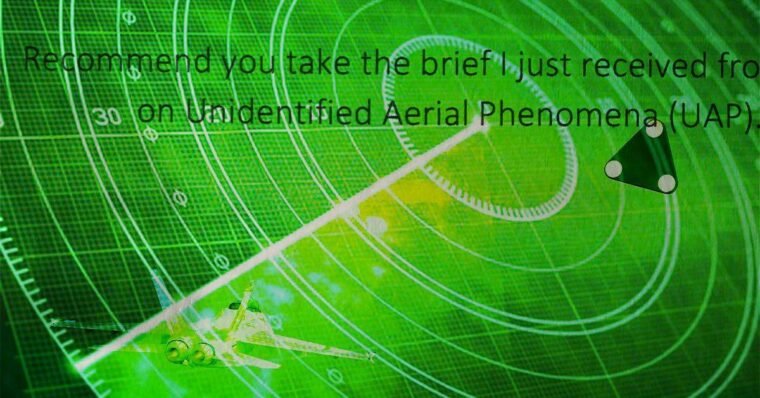In an exclusive feature for The Debrief, U.S. military and intelligence officials, as well as Pentagon emails, offer an unprecedented glimpse behind the scenes of what’s currently going on with The Pentagon’s investigation into UFOs, or as they term them, “Unidentified Aerial Phenomena” (UAP).
For the last two years, the Department of Defense’s newly revamped “Unidentified Aerial Phenomena Task Force” (or UAPTF) has been busy briefing lawmakers, Intelligence Community stakeholders, and the highest levels of the U.S. military on encounters with what they say are mysterious airborne objects that defy conventional explanations.
Along with classified briefings, multiple senior U.S. officials with direct knowledge of the matter say two classified intelligence reports on UAP have been widely distributed to the U.S. intelligence community. Numerous sources from various government agencies told The Debrief that these reports include clear photographic evidence of UAP. The reports also explicitly state that the task force is considering the possibility that these unidentified objects could, as stated by one source from the U.S. intelligence community, be operated by “intelligences of unknown origin.”
Significantly, a retired U.S. Air Force brigadier general and head of RAND corporation’s Space Enterprise Initiative has — for the first time — gone on record to discuss some of the most likely explanations for UAP. His responses were surprising.
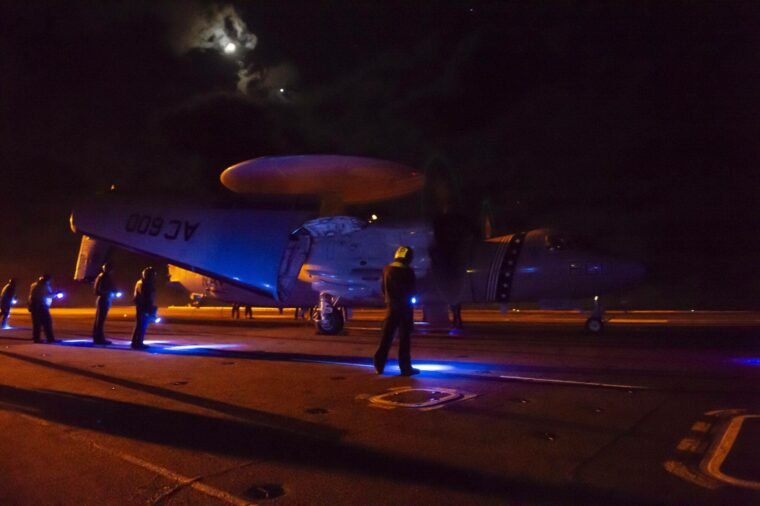

Briefings At The Highest Levels
In June, the Senate Select Committee on Intelligence’s FY2021 Intelligence Authorization Act contained an intriguing section titled “Advanced Aerial Threats.” In its inclusion, the committee gave an eye-opening official hint that the government has taken UFOs seriously in recent history by offering its support for the “efforts of the Unidentified Aerial Phenomenon Task Force at the Office of Naval Intelligence.” The Intelligence Committee additionally requested an unclassified report detailing the analysis of “UAP” or “Anomalous Aerial Vehicles.”
Though already acknowledged by the Intelligence Committee, the Pentagon formally acknowledged in mid-August that they had established a task force looking into UAP. In a press announcement, the Office of the Secretary of Defense stated, “the UAPTF’s mission will be to detect, analyze and catalog UAPs that could potentially pose a threat to U.S. national security.” According to the release, authority for the task force was approved by the Department of Defenses’s (DoD) chief operating officer, Deputy Secretary of Defense David L. Norquist.
The summer news of the establishment of the UAPTF seemingly suggests — for the first time since the shuttering of Project Blue Book, the Air Force’s official investigations into UFOs, in 1969 — that the Pentagon is now taking the subject of UFOs seriously.
However, an internal email obtained by The Debrief shows that almost one year before the DoD’s announcement, the highest levels of the U.S. military were already being briefed on UAP.
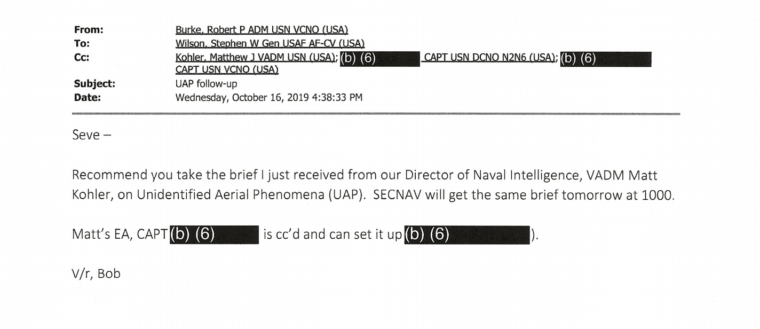

The email, obtained via Freedom of Information Act request, shows an October 16th, 2019 exchange between then-Vice Chief of Naval Operations, Admiral Robert Burke, and current Vice Chief of Staff for the Air Force, General Stephen “Seve” Wilson.
In the email, Adm. Burke tells Gen. Wilson, “Recommend you take the brief I just received from our Director of Naval Intelligence VADM Matt Kohler, on Unidentified Aerial Phenomena (UAP).” Adm. Burke concludes the email, “SECNAV [Secretary of the Navy] will get the same brief tomorrow at 1000.”
The “SECNAV” referenced in Adm. Burke’s email was then-Secretary of the Navy, Richard V. Spencer. A little over a month after this UAP briefing, Spencer was fired by then-Secretary of Defense Mark Esper over public disagreements stemming from a series of controversies involving the court-martial of Navy SEAL Eddie Gallagher.
Speaking on background, one U.S. Defense official lamented that a lack of continuity with DoD leadership might have hindered some of the UAPTF’s work. Within the past 24 months, there have been four different Secretaries of the Navy and five additional Secretaries of Defense. Vice Admiral Matt Kohler, noted for having provided the briefings, retired after 36 years with the Navy in June of this year.
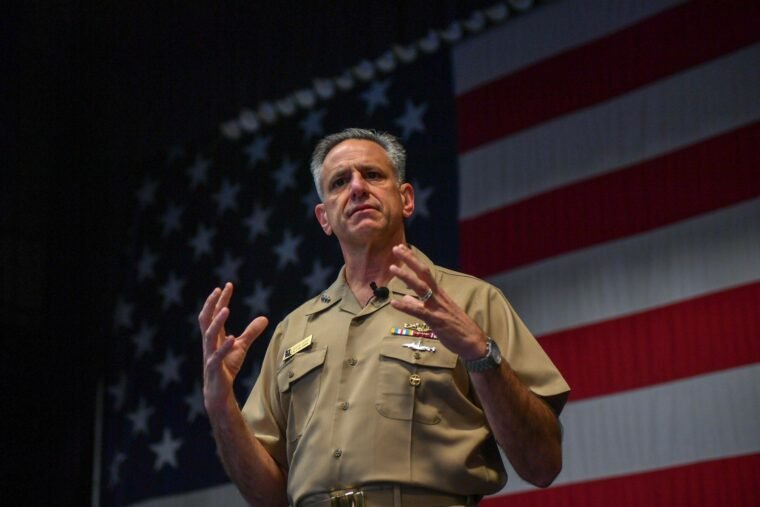

Reaching out to several active government officials and individuals who retain their government-issued security clearances, The Debrief learned that last fall was a busy time for the UAPTF. On October 21st, 2019, a briefing on UAP was conducted at the Pentagon for several Senate Armed Services Committee staffers.
Attendees at the meeting told The Debrief that they were provided information on two previous DoD-backed UFO programs: the Advanced Aerospace Weapon System Applications Program (AAWSAP) and the Advanced Aerospace Threat and Identification Program (AATIP). They were also briefed on “highly sensitive categories of UFO investigations.” Only two days later on October 23rd, staffers with the Senate Select Intelligence Committee were provided the same information in a meeting on Capitol Hill.
A former private contractor for AAWSAP and AATIP, Dr. Hal Puthoff, told The Debrief though he wasn’t present for the October briefings, he had on several occasions in the past two years been asked to make presentations for lawmakers. “I have been invited to brief congressional staffers on the Senate Armed Services Committee on UAP matters in the last couple of years,” Puthoff said in an email, “and have done so on more than one occasion.” Dr. Puthoff described the staffers during these meetings as being “engaged,” providing “positive responses, [and] more details always being requested.”
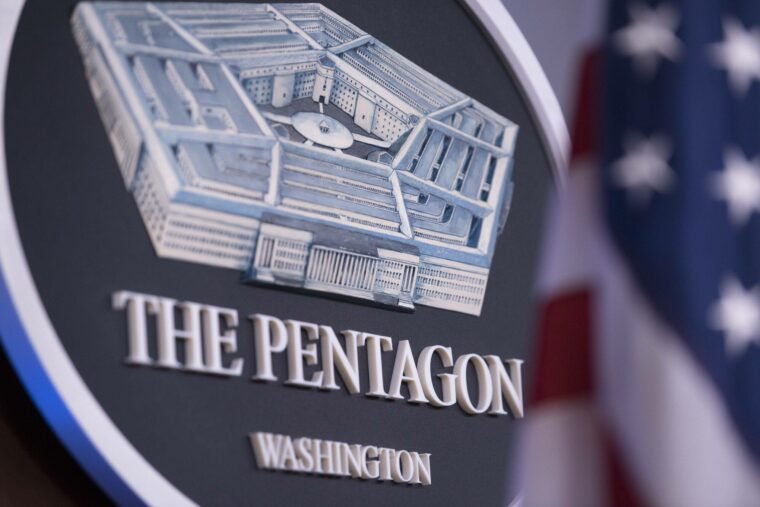

The Debrief reached out to the office of the Assistant Secretary of Defense for Public Affairs and DoD’s Executive Services Office and formally requested an interview with someone authorized to speak on the UAP briefings with the Joint Chiefs of Staff. In an email, Senior Strategist and Pentagon spokesperson Susan Gough responded, “To maintain operations security, which includes not disseminating information publicly that may be useful to our adversaries, DOD does not discuss publicly the details of either the observations or the examination of reported incursions into our training ranges or designated airspace, including those incursions initially designated as UAP – and that includes not discussing the UAPTF publicly, also.”
Official public affairs channels indicate the Pentagon is not interested in sharing any more information on the UAP topic. However, several current and former officials with the DoD and individuals working for multiple U.S. intelligence agencies told The Debrief that there was much more going on behind closed doors.
UAP Intelligence Position Reports
Multiple sources confirmed for The Debrief that the UAPTF had issued two classified intelligence position reports, which one individual described as “shocking.” Details provided on these reports suggest both a greater degree of Pentagon involvement and that the UAPTF’s hunt for unidentified objects isn’t confined only to aerial phenomena.
Two officials with the DoD and one from the U.S. intelligence community were willing to provide details on the contents of the classified report. An additional three other U.S. intelligence officials and a federal law enforcement officer confirmed the report’s existence but were only willing to provide comments on their distribution. Given the report’s classification and their discussion of a “sensitive intelligence matter,” the officials we spoke with did so only under strict conditions of anonymity. While The Debrief has agreed not to provide information on sources, identities, and employers, everyone we spoke with works within the U.S. intelligence community and under the authority of the U.S. Director of National Intelligence.


One of the intelligence reports, released in early 2019, is said to have provided a general overview of the UAP topic and included details of previous military encounters. According to sources who had read it, the report also contained an unreleased photograph of “aerial phenomena” categorized as “unidentified.” [Editor’s Note: The original version of this article said the image was captured in 2018. Subsequent information later confirmed the date to be March 2019. See: Pentagon Confirms Leaked UFO Images Are Authentic.]
The Debrief was told the accompanying photo was captured from within the cockpit of an F/A-18 fighter jet with a pilot’s personal cell phone. According to three U.S. officials who had seen it, the photo showed an unidentified silver “cube-shaped” object. The report is said to have indicated the object was “hovering” or completely motionless when military pilots encountered it. All three officials agreed that based on the photo, the object appeared to be at an altitude of roughly 30,000 to 35,000 feet and approximately 1,000 feet from the fighter jet.
Defense and intelligence officials willing to discuss the report and those who only wished to confirm its dissemination all expressed shock that it had been so widely distributed amongst the intelligence community.
“In decades with the [Intelligence Community] I’ve never seen anything like this,” said one intelligence official.
One defense official described the report’s distribution as having gone through “normal, non-public, information sharing channels.” Other officials who’d seen and read the report either declined to elaborate or indicated the report was distributed on various secure systems. One defense official indicated it was distributed on the DoD’s Secret Internet Protocol Router Network (SIPRNet). Two other intelligence officials said they received the information via NSANet (the NSA’s official intranet). An additional source said the report was distributed via the CIA’s Intelink system.
According to those willing to discuss the document, the report’s most disconcerting aspect was one of the potential explanations provided for what UAP could represent. Sources say a “list” of possible prosaic explanations for these mysterious airborne encounters was provided, however the report expressly stated that the potential for UAP to be “alien” or “non-human” technology was of legitimate consideration.
All sources interviewed by The Debrief confirmed that the task force issued an updated second UAP position report later in the summer of this year. Like the first, officials say this recent intelligence report was very widely distributed and shared amongst the intelligence community.
“It went viral,” said one intelligence official who had read the report.
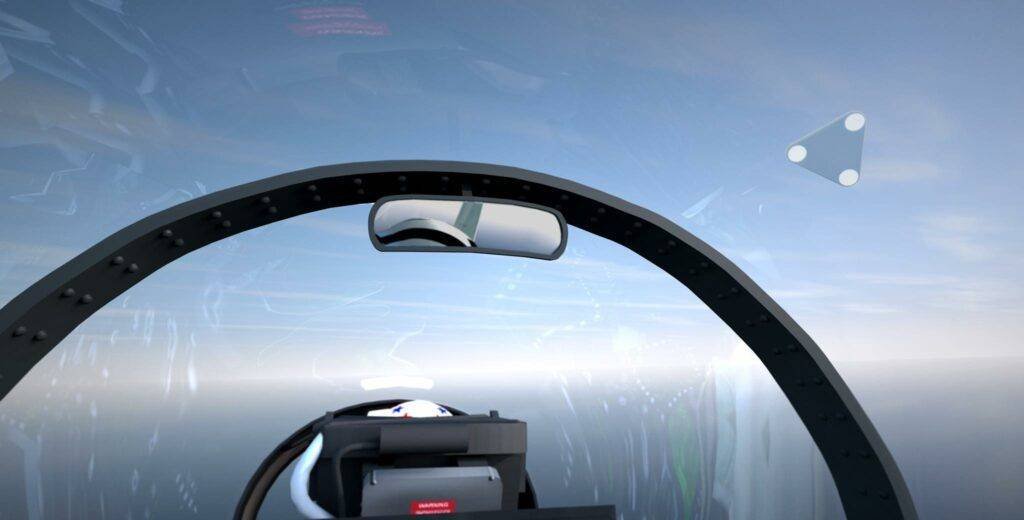

Overwhelmingly, everyone The Debrief spoke with said the most striking feature of the recently released UAPTF intelligence position report was the inclusion of a new and “extremely clear” photograph of an unidentifiable triangular aircraft.
The photograph, which is said to have also been taken from inside the cockpit of a military fighter jet, depicted an apparent aerospace vehicle described as a large equilateral triangle with rounded or “blunted” edges and large, perfectly spherical white “lights” in each corner. Officials who had seen it said the image was captured in 2019 by an F/A-18 fighter pilot.
Two officials that received the report said the photo was taken after the triangular craft emerged from the ocean and began to ascend straight upwards at a 90-degree angle. It was indicated that this event occurred off the eastern coast of the United States. Several other sources confirmed the photo’s existence; however, they declined to provide any further specifics of the incident.
Officials who read the recent report say it primarily focused on “Unidentified Submersible Phenomena,” or unidentified “transmedium” vehicles capable of operating both underwater and in the air.
The three officials we spoke with said the report suggested the UAP Task Force appears to be concerned that the objects being termed as UAP may be originating from within the world’s oceans. Strange as this may sound, the idea of “USOs,” or “unidentified submersible objects,” is not something exclusive to the current UAPTF.
In various public appearances, astronomer and chief video/image analyst for the Mutual UFO Network (MUFON), Marc D’Antonio, has shared an unusual experience involving the detection of an underwater “Fast Mover,” which occurred while he was sailing as a civilian aboard one of the U.S. Navy’s prized attack submarines.
Last year, defense journalist Tyler Rogoway spoke with several veteran submariners to get their take on D’Antonio’s account. While at least one person expressed skepticism about D’Antonio being granted a civilian ride-along, the Navy vets being interviewed almost unanimously acknowledged that unexplained, very high-speed sonar targets are indeed recorded by some of the most sophisticated listening equipment on the planet.
Agreeing to speak only on background, a senior member of the intelligence community whose responsibilities for decades involved underwater surveillance and reconnaissance programs told The Debrief there was validity to claims of extremely fast-moving underwater objects being detected by U.S. military systems.
“On occasion, there are detections made of non-cavitational, extremely fast-moving objects within the ocean.” The intelligence official declined to elaborate further, citing the high levels of security classification associated with underwater reconnaissance.
Officials who had read the reports say the UAPTF appears particularly interested in “transmedium vehicles.” While this may seem unusual, many accounts exist — some going back centuries — in which people say they have observed unidentifiable craft operating in and out of the water.
The Debrief reached out to Steven Zaloga, co-author of the annual World Military Unmanned Aerial Systems Market Profile & Forecast and senior defense analyst for the Teal Group in Virginia, about the state of current or near-future development of “transmedium” vehicles or systems. Zaloga indicated he was unaware of any past or present technologies that are close to being capable of transitioning between air and submersible travel. “I have no idea what-so-ever on objects able to cross the air/water barrier,” Zaloga said in an email.
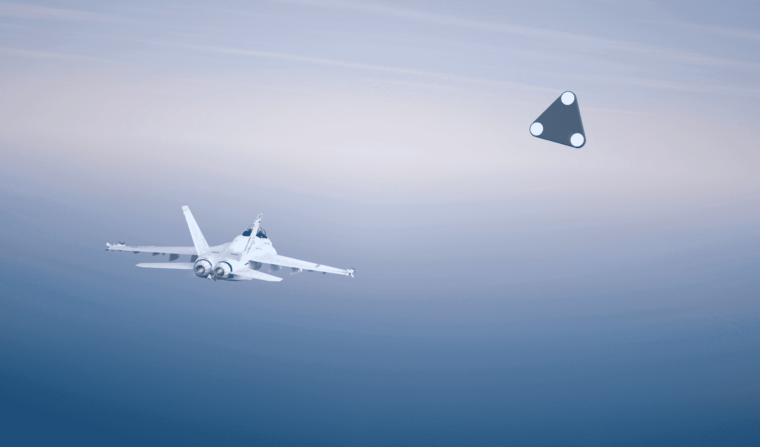

What is The Pentagon Officially Saying ABOUT UAP?
Although The Debrief learned of the issuance and information reportedly detailed in the two UAPTF intelligence position reports, officials we spoke with declined to provide any specifics as to why the most recent report focused on waterborne associations with UAP.
One active defense official familiar with the current UAP investigations said the UAPTF has a wealth of photographic evidence, collected from military pilots’ personal devices as well as sophisticated DoD surveillance and reconnaissance platforms. The source also told us some of the best evidence the UAPTF has acquired comes from measurement and signature intelligence (MASINT), rather than from videos or still images.
Although officials we spoke with didn’t provide any specifics to this point, it is assumed that any Top Secret or Sensitive Compartmentalized Information used to help form the UAPTF’s current opinions would not have been included in the UAP position reports, based on their widespread distribution.
Before publication, The Debrief reached out to The Pentagon for comment on the information leaked from the UAPTF reports. Pentagon spokesperson Susan Gough did not confirm or deny the existence of the UAP intelligence reports and declined to make any comment on their contents. We followed up and requested the current media posture outlined by the official public affairs guide for UAP and dictated by Department of Defense policy (DoDI 5405.03). Ms. Gough referred back to her previous statement, indicating that the DoD does not discuss UAP publicly. As noted elsewhere, refusal by the Pentagon to discuss UAP is hardly anything new.
In 2017, then-Assistant Secretary of Defense for Public Affairs Dana White confirmed to Politico that the DoD had studied UFOs under AATIP. Additionally, White said the program had been run by the former Director for the National Programs Special Management Staff for the Office of the Undersecretary of Defense for Intelligence, Luis Elizondo. In an effort to “correct the record,” however, the Pentagon issued a statement in December 2019 saying AATIP was not UAP-related, and that Elizondo had “no responsibilities” in the program.
In May of this year, The Debrief informed the Pentagon Public Affairs Office that we had conducted a number of interviews with former senior Pentagon officials and a senior White House advisor, as well as obtained documents, all of which showed AATIP was involved in UAP investigations and that Luis Elizondo was indeed the custodian of the AATIP portfolio. Additionally, information obtained showed elements of the Defense Intelligence Agency and National Reconnaissance Office had participated in AATIP.
Though this request was less than six months after the Pentagon’s “no responsibilities” statement, their spokeswoman Gough replied, “Please keep in mind he [Elizondo] left DoD over three years ago, and there are personnel and privacy matters involved.”
Given the recent presidential election results and impending transfer of executive power, The Debrief reached out to the transition team for President-Elect Joe Biden. While not explicitly discussing UAP, a transition team spokesperson said Biden intends to “[i]mmediately return to daily press briefings at the White House, U.S. Department of State, and U.S. Department of Defense. Our foreign policy relies on the informed consent of the American people. That is not possible when our government refuses to communicate with the public.”
[Editor’s Note, April 10, 2021: After additional photos, briefing slides, and a video depicting purported UAP were leaked in April 2021,The Pentagon confirmed the images were captured by U.S. Navy personnel and the materials were used in part of the investigations by the UAP Task Force. See:Pentagon Confirms Leaked UFO Images Are Authentic.]


What Does It All Mean?
From closed-door meetings to senior military leadership and the issuance of classified intelligence reports, all indications suggest the DoD is indeed taking the UAP issue seriously. What new information has come to light about the government’s UAP investigations provides us with few answers, however, and certainly raises a number of questions.
Classification has long surrounded the U.S. government’s most sophisticated airborne platforms, however when it comes to underwater systems, the extremity of official secrecy falls into a class by itself. For instance, retired Navy Admiral Bobby Ray Inman acknowledged decades ago that he served as director for the National Underwater Reconnaissance Office (NURO); yet despite this, to date the government denies that the NURO even exists.
Even if the Senate Select Intelligence Committee’s request for an unclassified UAP report ends up being enacted in the FY2021 Intelligence Act, legislative experts have pointed out that the UAP report provision is not binding law. In essence, there’s no guarantee the public will be provided any comprehensive information on UAP. While Congress is required to have access to classified information, only the executive branch has the authority to declassify national security information in order to make it public.
Should the DoD become more willing to discuss UAP publicly, there are plenty of indications that it might be a disappointment compared to many of the popular myths and narratives intertwined with the UFO subject over the last 70 years.
Every source The Debrief spoke with who had either seen the published position reports or was familiar with the activities of the UAPTF said that no concise estimate of the situation for UAP has been achieved. While they acknowledged that many hypotheses are being explored, the U.S. government presently lacks any definite explanation for UAP-related events.
Focusing on the DoD’s statements that the mission of the UAPTF is to “detect, analyze and catalog UAPs that could potentially pose a threat to U.S. national security,” The Debrief spoke with retired U.S. Air Force Brigadier General Bruce McClintock.
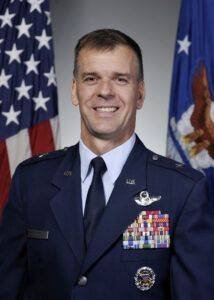

During his 30-year career with the Air Force, McClintock’s assignments included White House Fellow to President George W. Bush, Executive Assistant to the Commander of NORAD, Executive Assistant to the Vice Chairman of the Joint Chiefs of Staff, and Special Assistant to the Commander of Air Force Space Command. Before retiring in 2017, Gen. McClintock amassed more than 3,000 flight hours on more than 35 aircraft, including the A-10, F-15B/D, F-16A/B/C/D, and the F-111. Presently, Gen. McClintock heads up the RAND corporation’s Space Enterprise Initiative and serves as the focal point for all RAND space-related research for the U.S. government and U.S. allies.
McClintock was dismissive of the idea that U.S. military encounters with UAP could be related to any form of classified aerospace testing.
“It is unlikely that the U.S. government would intentionally conduct tests against its own unwitting military assets,” he told The Debrief in an interview. “To do so would require a very high level of coordination and approval for the potential safety and operational security risks.”
In separate interviews last year, aerospace engineer and Area 51 veteran T.D. Barnes and former CIA executive S. Eugene “Gene” Poteat both suggested radar detections by the Navy of extreme aerial maneuvers sounded suspiciously similar to a top-secret electronic warfare program they were involved with in the 1960s, codenamed PALLADIUM.
However, Poteat and Barnes acknowledged they had no explanation for any of the physical sightings by military aviators. Coinciding with Gen. McClintock’s comments, both men said everyone involved in any classified assessments involving the use of classified aerospace platforms was made aware they were participating in a test. This even included times when the platforms were deemed “UFOs because they were so secret that they didn’t exist.”
McClintock, who also served as Senior Defense Attaché to the U.S. Embassy in Moscow, seemed equally doubtful that UAP might represent the technology of a foreign adversary.
“It is not outside the realm of the plausible that an adversary would test the ability of the United States to detect some new capability, although it would be more likely they would only do this after testing the capability within or closer to their own territory before trying to penetrate U.S. airspace,” he stated.
Ultimately, after asking numerous current and former defense officials and subject matter experts, The Debrief has been unable to find anyone of authority — whether on or off the record — willing to say the UAP encounters reported by military aviators are consistent with black budget testing, or “ferreting” of U.S. air defense by foreign governments. Equally, we have been unable to find anyone of credentialed background willing to say what, exactly, this means the source of these UAP could be.
Offering the Pentagon one final opportunity to discuss what we intended to report or to comment on McClintock’s statement, The Debrief once more reached out to spokeswoman Susan Gough. Our offer went unanswered.
At least from an official position, the source behind unidentified aerial phenomena appears to remain a mystery.
Follow and connect with author Tim McMillan on Twitter: @LtTimMcMillan
Don’t forget to follow us on Twitter, Facebook, and Instagram, to weigh in and share your thoughts. You can also get all the latest news and exciting feature content from The Debrief on Flipboard, and Pinterest. And subscribe to The Debrief YouTube Channel to check out all of The Debrief’s exciting original shows: The Official Debrief Podcast with Michael Mataluni– DEBRIEFED: Digging Deeper with Cristina Gomez –Rebelliously Curious with Chrissy Newton
Correction: December 3, 2020: An earlier version of this article inaccurately indicated Dr. Hal Puthoff had provided meetings for Congressional staffers on October 21 and 23 of 2019. Dr. Puthoff contacted The Debrief after publication to clarify that, while he had briefed staffers for principle elected leadership on numerous occasions, there was a miscommunication in his previous statements to us regarding the specific briefings mentioned. As reported by the New York Times in July of this year, the briefings that occurred on October 21st and 23rd of 2019 were provided by Dr. Eric Davis.
